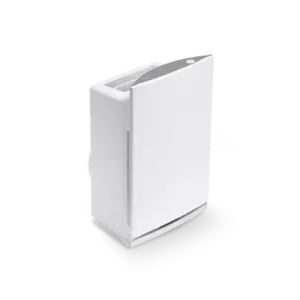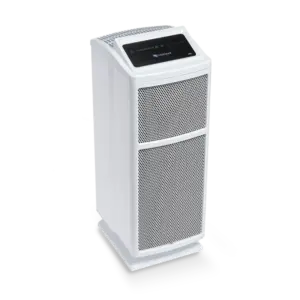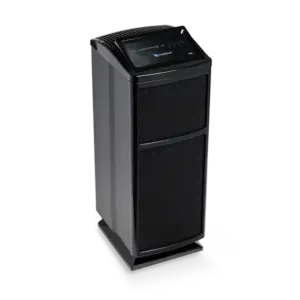Are you looking for natural, nontoxic solutions to indoor air pollution concerns? You’ve come to the right place. Indoor air pollution has been linked to various adverse health effects, such as headaches, dizziness, and fatigue. In this article, we will discuss the main causes of indoor air pollution, as well as suggest 11 solutions you can try to create a safe, nontoxic environment in your home.
What Causes Indoor Air Pollution?
There are many sources of indoor air pollution, including tobacco products, furniture, personal care products, beauty products, art supplies, office supplies, and commonly used household cleaning products. Some sources, such as building materials and furnishings, release pollutants continuously. Other sources, related to activities such as smoking, cooking, and cleaning, release pollutants intermittently. Malfunctioning appliances or improperly used products, such as gas stoves, can release even more pollutants into the air.
11 Nontoxic Solutions for Indoor Air Pollution Concerns
1. Bring nature indoors
Bringing more plants into your home can help you clean the air and beautify your space at the same time. Some plants can convert air pollutants (like formaldehyde and carbon dioxide) into oxygen. Popular, easy-to-care-for choices include the aloe plant, English ivy, and bamboo palm. Click here to learn which ones I use: How to take care of plants with 3 easy steps.
2. Crack the windows (and keep the floors clean)
Any enclosed space, including your home, recirculates the same air over and over again. By cracking open a window, you can let your home exhale stale air and inhale fresh air. Keeping the floors clean ensures that fewer particles circulate through the air in the first place, which can help protect your lungs.
3. Be mindful of what you burn
Any combustion activity can create toxic fumes and compounds. Common combustion activities include cooking, burning candles, smoking, and using a fireplace. Minimize burning things indoors. When you do, then ventilate, use your air purifier, or consider cracking open a window. It's best to have a no smoking policy for inside, or near, your home.
4. Vacuum regularly
Regular dusting and vacuuming can significantly reduce your indoor air pollution of allergens, dust mites, toxic chemicals, and heavy metals. If you have asthma or dust allergies, consider investing in a vacuum with a sealed system and a special high-efficiency particulate air (HEPA) filter.
5. Keep filters clean
Filters for things like air purifiers and ventilation systems should be cleaned according to the manufacturer's instructions. Mold, dust, bacteria, viruses, and debris can accumulate, making less effective the filters or systems they serve.
6. Use nontoxic household cleaning products
Using traditional cleaning products can contaminate your indoor air quality. Choose “fragrance-free” laundry and cleaning supplies whenever possible. Note that “unscented” may still contain chemicals to mask scent. Try nontoxic alternatives found on the Environmental Working Group (EWG) website, or make your own vinegar-based cleaning solutions at home.
7. Be aware of the furniture you purchase
Make sure that the furniture you purchase is not made with an adhesive that contains formaldehyde. Formaldehyde is a colorless, flammable chemical that is used in building materials, household products, and as an industrial fungicide and disinfectant. Excessive levels of formaldehyde in the air may cause burning sensations in the eyes, nose, and throat, watery eyes, wheezing, nausea, and skin irritation. If your furniture is made out of plywood, medium-density fiberboard, or particleboard, it’s likely emitting formaldehyde.
8. Make sure eco-friendly paint is also gentle on human health
Find nontoxic, eco-friendly paint that has minimal volatile organic compounds (VOCs) and hazardous air pollutants (HAPs). These compounds vaporize and emit gases even after they’ve dried, which can contribute to headaches and dizziness. During and for several hours immediately after certain activities, such as paint stripping, VOC levels indoors may be 1,000 times higher than outdoor levels. So be especially careful while painting your home. And don't have a false sense of security: even after painting with "nontoxic" paint, take precautions of ventilating and airing out your home.
9. Groom your pets more frequently
When pets shed, their fur can become airborne and clog your air filters. Pet dander (tiny flakes of skin shed by cats and dogs) can stick to ductwork in your ventilation system, causing everyone in your home to breathe it in each time the system turns on. Give your pets a bath and groom them as frequently as possible, especially if you have people with dander allergies living with you.
10. Give your stuffed toys and pillows a deep freeze
Freezing temperatures are one of the best solutions for killing off dust mites hiding in plain sight. Put stuffed toys and pillows in a waterproof bag and place them in the freezer for a few hours. And minimize the stuffed animals you buy and keep.
11. Adopt a "shoes-off" policy
Shoes can carry bacteria, dirt, pesticides, and other outdoor pollutants into your home. A doormat can help, but having a “shoes-off” policy will serve you even better.
High-Performance Portable Air Purifiers
Explore plug-and-play solutions for your space that meet or exceed the HEPA standard.
-
Sale!

Compact Air Purifier
Up to 500 sq ft
Original price was: $299.00.$139.00Current price is: $139.00.
Add to cart
-
Sale!

Ultrafine 468 Air Purifier – White
Up to 1,200 sq ft
Original price was: $999.00.$449.00Current price is: $449.00.
Add to cart
-
Sale!

Ultrafine 468 Air Purifier - Black
Up to 1,200 sq ft
Original price was: $999.00.$449.00Current price is: $449.00.
Add to cart

